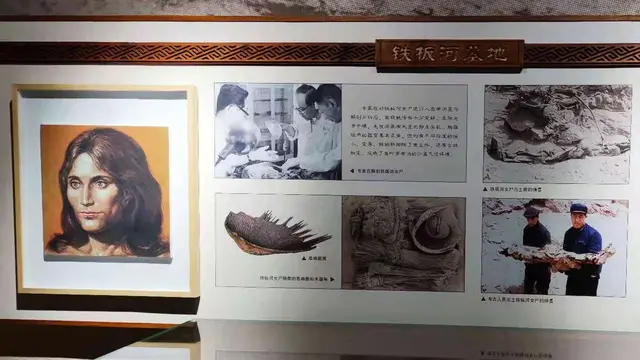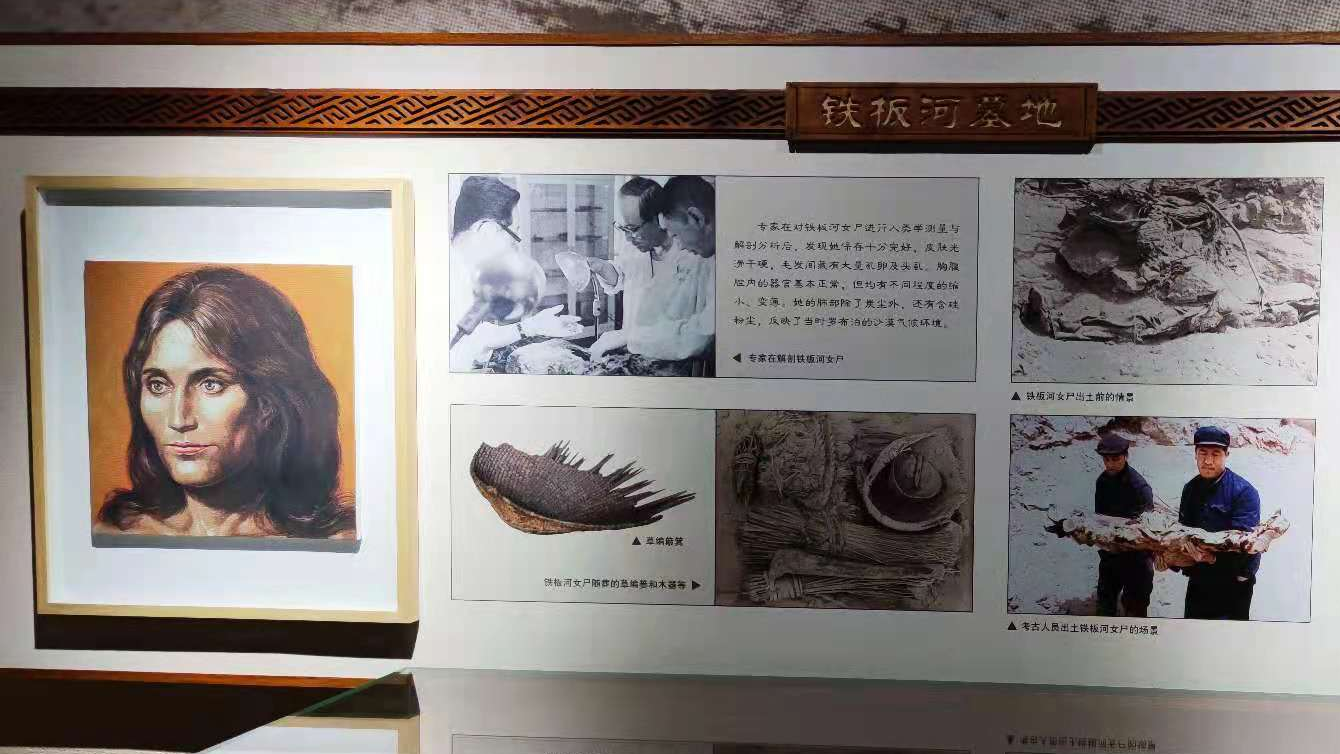
The Xinjiang Uygur Autonomous Region Museum in Urumqi currently houses six Tarim Basin mummies, including the oldest and the most popular – the Loulan Beauty. These mummies are displayed at a special gallery aptly titled "The Mortals from Last Millennium: Exhibition on the Ancient Corpses of Xinjiang." Abhishek G Bhaya/CGTN
Ancient mummies have always fascinated the human mind, connecting the past with the present in mysterious ways. For mummy enthusiasts, a visit to Xinjiang Uygur Autonomous Region Museum in Urumqi, could be a spellbinding experience.
The museum is home to some of the world's most ancient mummies discovered in Xinjiang's Tarim Basin over the past decades. These mummies – the oldest of which dates back to 1800 BC – are displayed at a special gallery aptly titled "The Mortals from Last Millennium: Exhibition on the Ancient Corpses of Xinjiang."
"We have a special exhibition of Xinjiang ancient corpses and their cultural relics. Over the past few decades, the exhibition has received a high degree of attention from domestic tourists as well as foreign visitors," Yu Zhiyong, the curator of the museum told CGTN Digital. "The exhibition is quite similar to the mummy exhibition in the National Museum of Egypt," he added.
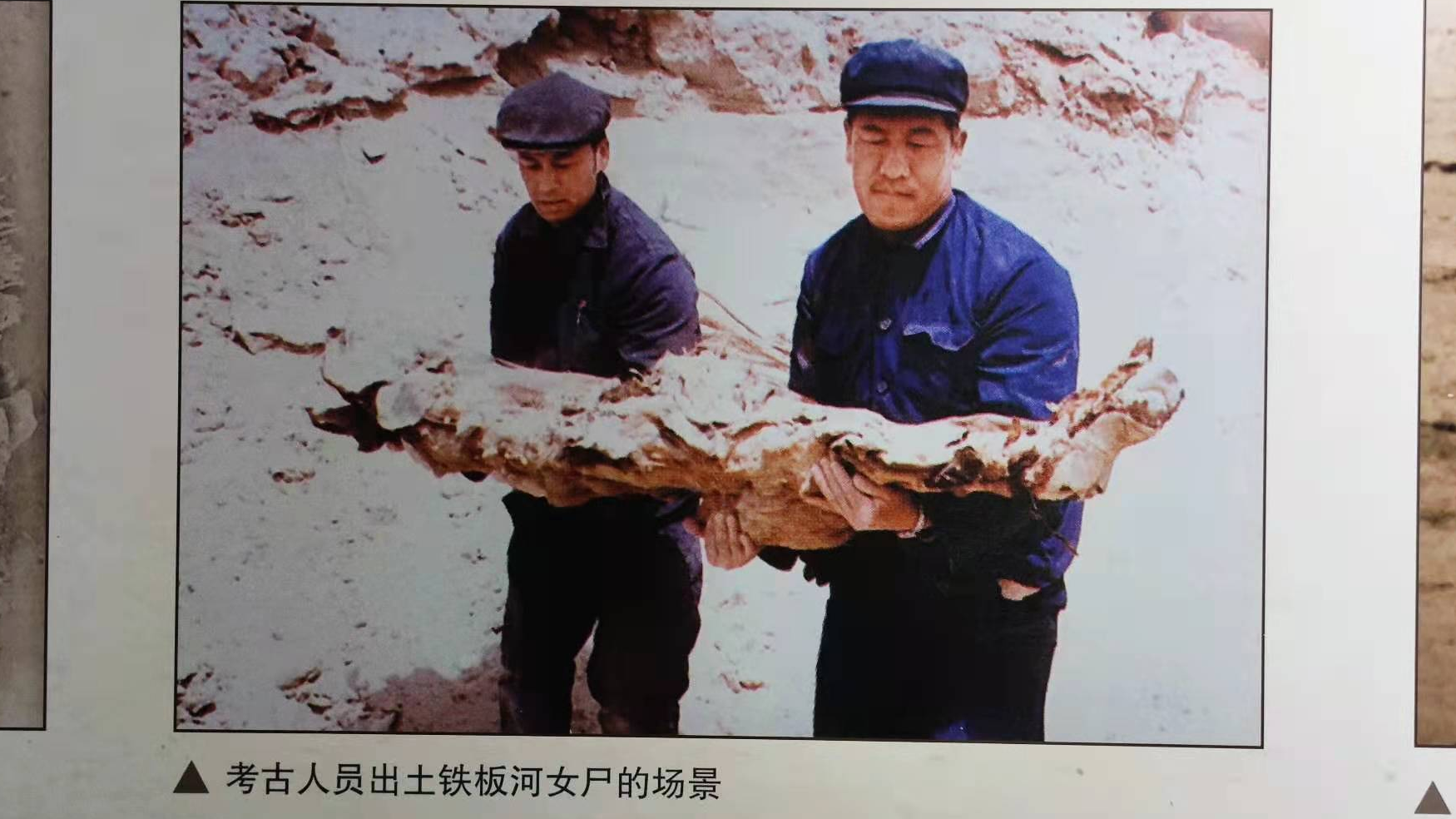
A photo displayed at the Xinjiang Uygur Autonomous Region Museum, Urumqi, shows Chinese archaeologists holding "the Loulan Beauty" mummy following its excavation from the Lop Nur area in the eastern fringe of Tarim Basin in 1980. Abhishek G Bhaya/CGTN
The museum currently houses six mummies, including the oldest and the most popular of the Tarim Basin mummies – the Loulan Beauty. This is a mummified body of a woman, of about 155 cm long, who is believed to have died at the age of 45 around 1800 BC. The mummy was discovered in Lop Nur – a dried salt lake in the eastern fringe of Tarim Basin between the Taklamakan and Kumtag deserts – by Chinese archaeologists in 1980.
She was found wrapped in a woolen cloth. The Loulan Beauty, with her auburn hair and Eurasian feature, is the most popular of the Tarim Basin mummies todayand points to the multi-cultural, multi-ethnic civilization of Xinjiang.
"Xinjiang is a multi-ethnic border region. Since history, all ethnic groups in China have jointly opened up our vast territory, jointly created our common history and created a long-standing culture. Similarly, they have jointly created our great national spirit," said Yu, who is also an archaeologist.
General Zhang Xiong, 'Qiemo Man, Woman' and 'Princess of Xiaohe'
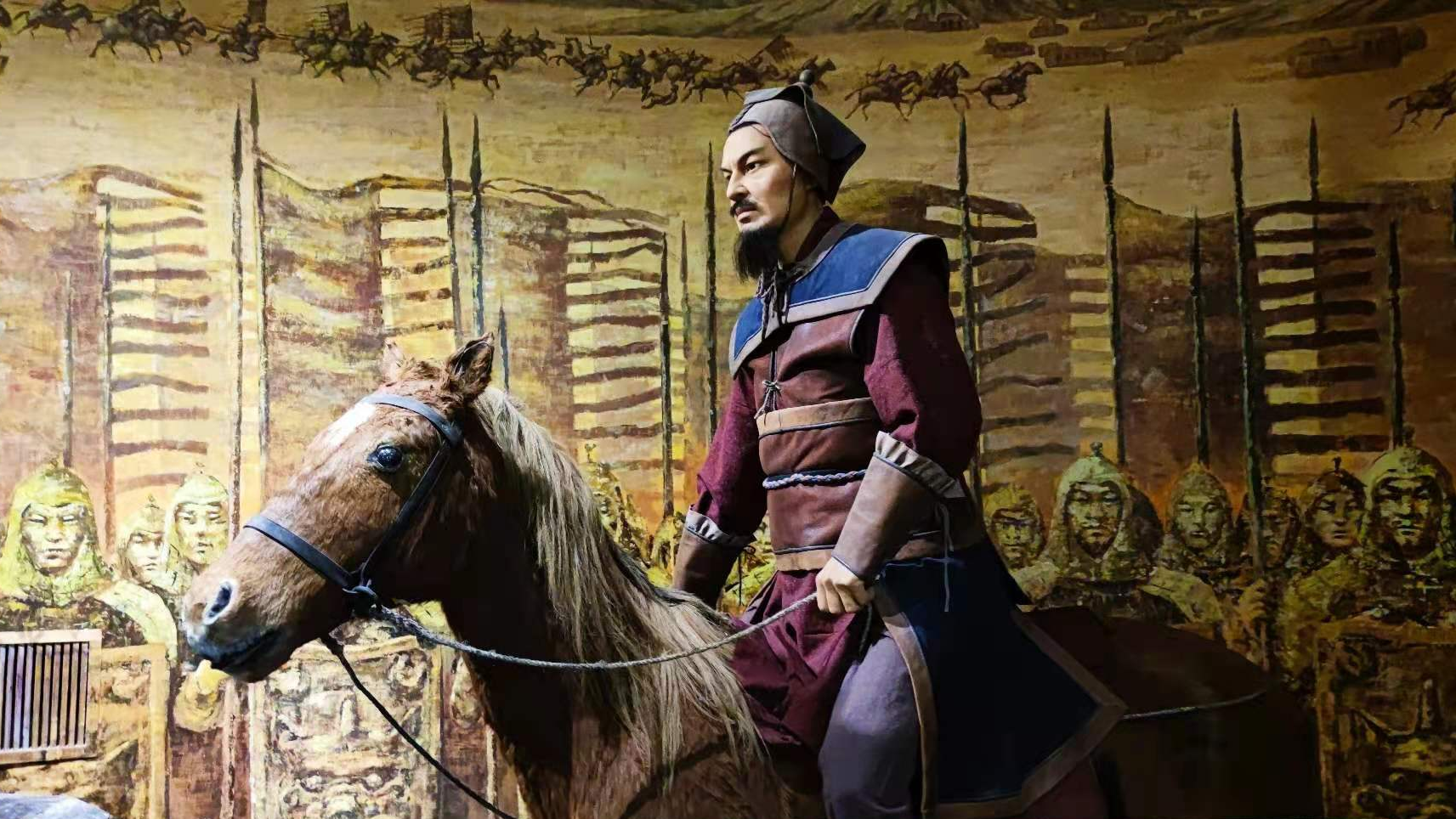
A figurine of Chinese General Zhang Xiong displayed next to his mummy (not seen) at the Xinjiang Uygur Autonomous Region Museum, Urumqi. Abhishek G Bhaya/CGTN

A photo of the "Qiemo Man" mummy with face tattoos displayed next to his mummy (not seen) at the Xinjiang Uygur Autonomous Region Museum, Urumqi. Abhishek G Bhaya/CGTN

A photo of the "Princess of Xiaohe" mummy displayed next to her mummy (not seen) at the Xinjiang Uygur Autonomous Region Museum, Urumqi. Abhishek G Bhaya/CGTN
The curator pointed out to another prominent mummy on display that of a famous Chinese General Zhang Xiong from the 7th century.
"General Zhang Xiong of the Gaochang Kingdom died in 663 AD. He made some outstanding contributions to a small country in the Turpan Basin. He may have had a very close interaction with the famous monk Tang Seng (Xuanzang) who travelled to the West (India) to seek dharma (Buddhist wisdom)," he remarked citing the diversity of the mummies.
Other notable mummies in the exhibition include the "Qiemo Man" and the "Qiemo Woman." The corpses of the adult male and female, also of Eurasian features, dating back to 1000 BC were discovered near the town of Qiemo in the Taklamakan Desert. Both were found wearing red twill tunics and leggings. The bearded male also had a tattoo on the side of his head.
A mummy of an adult female, discovered at Xiaohe Cemetery, is also displayed. Popularly known as the "Princess of Xiaohe" owing to her beautiful features, this mummy is believed to be a contemporary of the Loulan Beauty. The sixth mummy is that of an infant from Gumugou Cemetery and believed to be 2,800 years old. The corpse was found wrapped with a woolen blanket from head to toe only with the face visible.
Lop Nur's saline and dry environment cause natural preservation
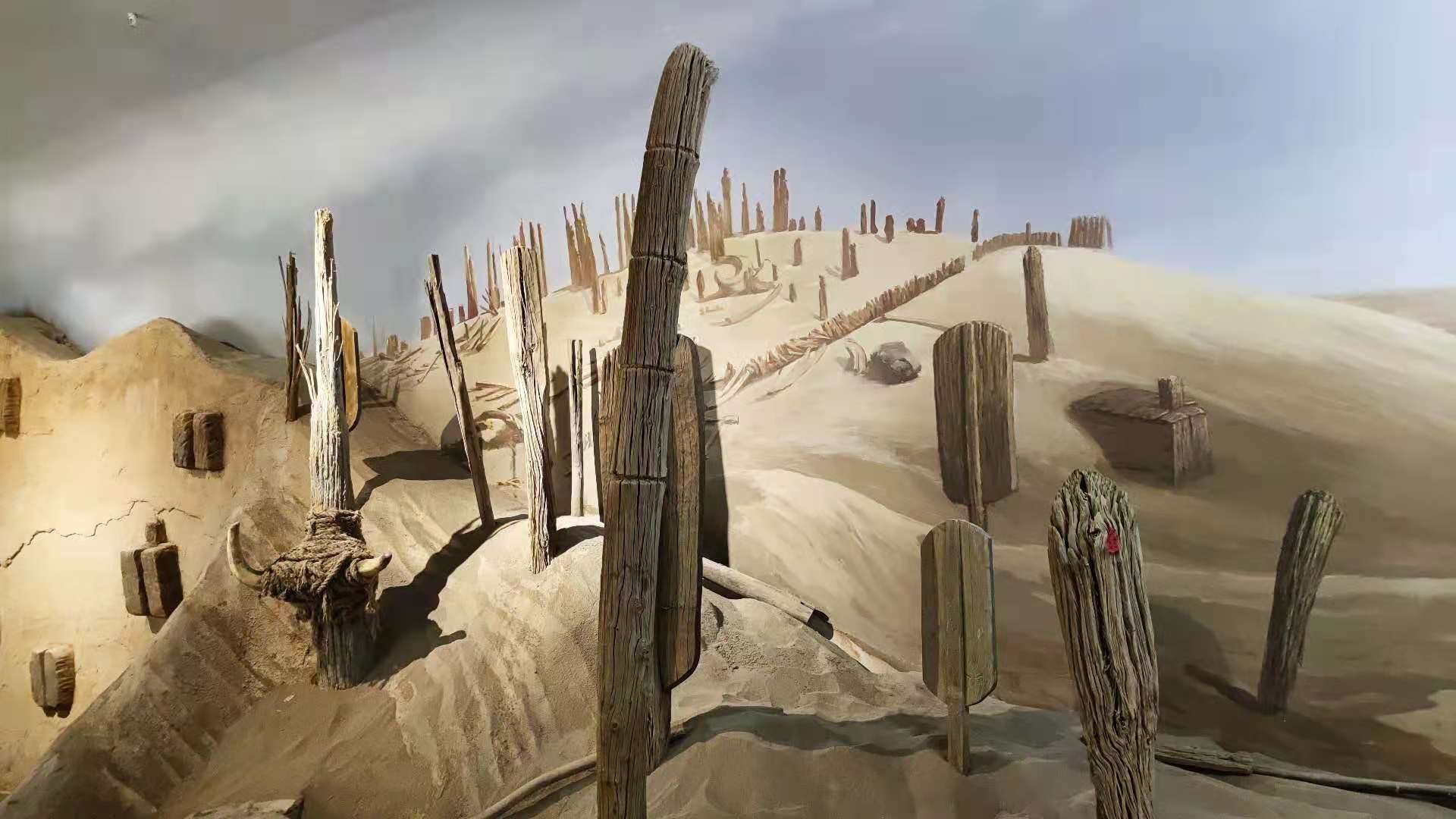
A replica of the Xiaohe Cemetery, a Bronze Age archaeological site located near Lop Nur, recreated at the Xinjiang Uygur Autonomous Region Museum, Urumqi. Abhishek G Bhaya/CGTN
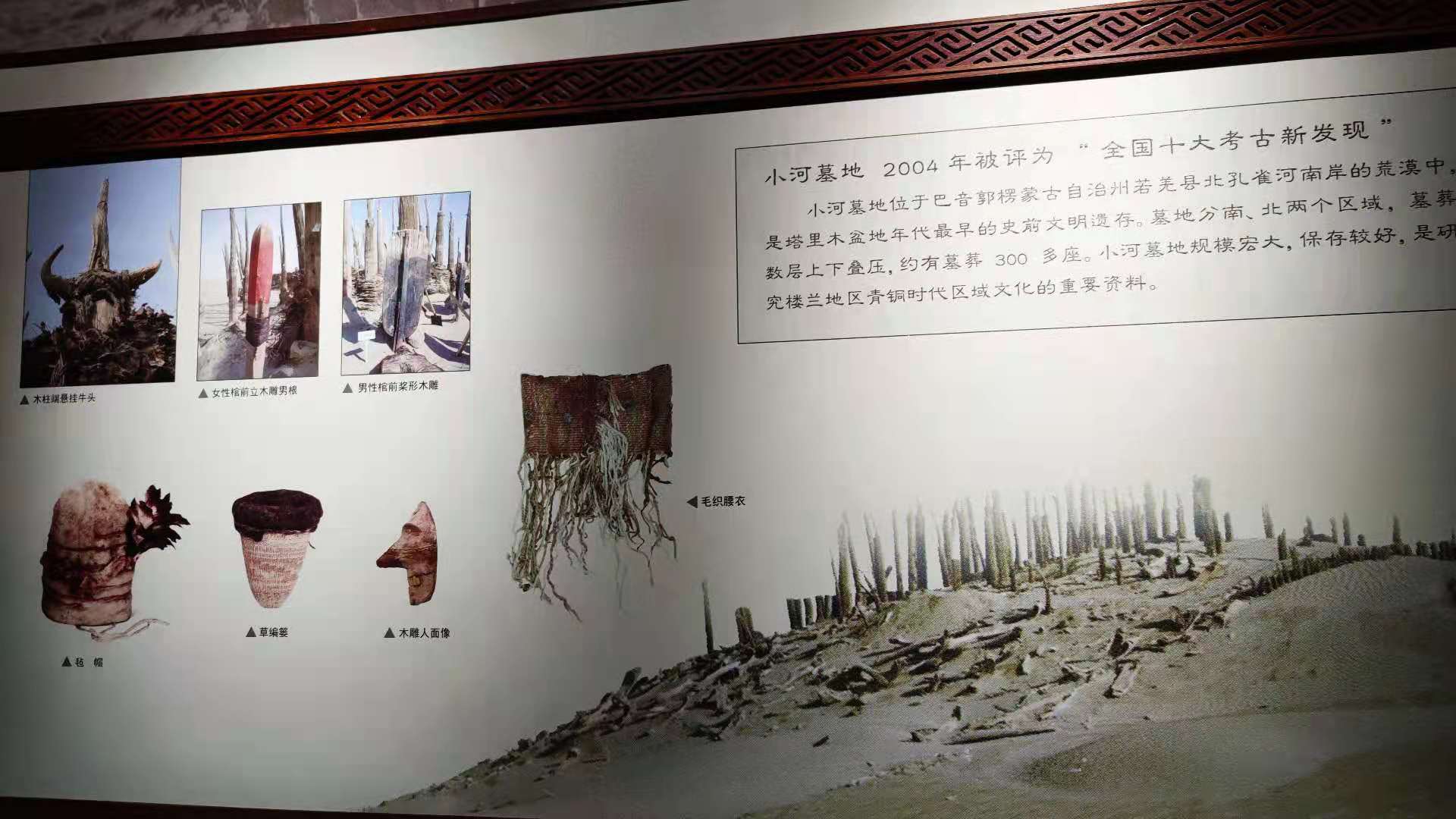
A photo of the Xiaohe Cemetery and some relics excavated from the site displayed at the Xinjiang Uygur Autonomous Region Museum, Urumqi. Abhishek G Bhaya/CGTN
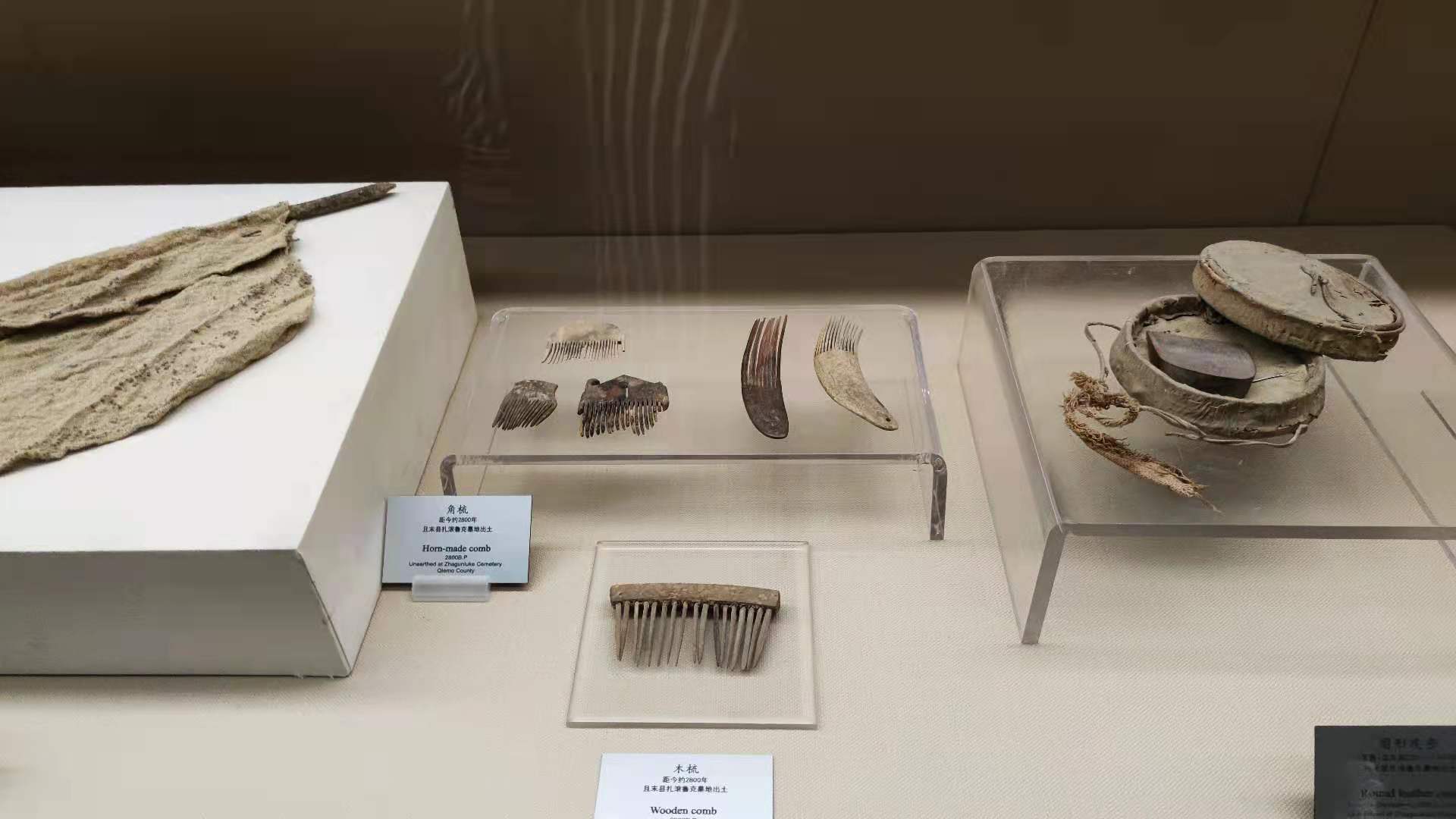
Archaeologists have also discovered several accessories such as combs, jewelry, hats, fabric and textile, leather boots, wooden wares and baskets along with the Tarim Basin mummies. Abhishek G Bhaya/CGTN
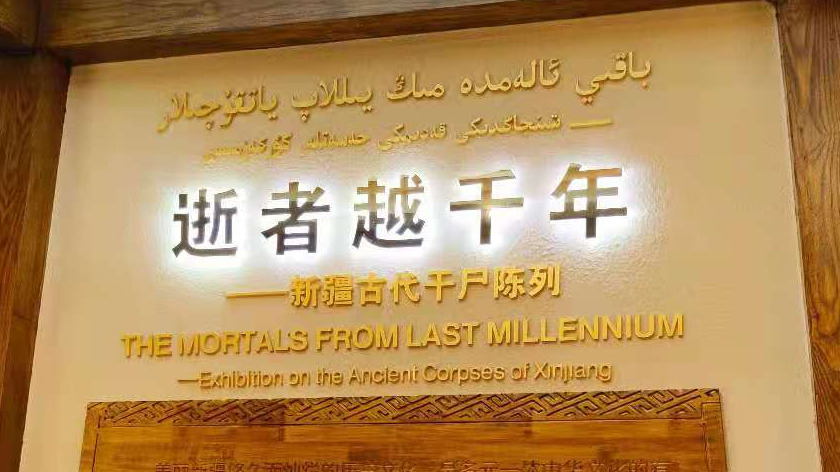
The sign at the entrance of "The Mortals from Last Millennium: Exhibition on the Ancient Corpses of Xinjiang" at the Xinjiang Uygur Autonomous Region Museum, Urumqi. Abhishek G Bhaya/CGTN
Unlike the Egyptian mummies, which were preserved on purpose, most of the Tarim Basin mummies were preserved almost by accident or naturally. They were buried near the Lop Nur salt lake where the arid conditions of the desert helped preserved some of the finer details of their faces including hair, teeth, eyelashes and beard.
"Mummification around the world can be divided in two categories. The first kind, as in the case of mummies in the Egypt, is carried out artificially to preserve the corpse. The other kind is when corpses become mummified due to natural air-drying or long-term water retention or in a frozen state," Yu explained.
"Xinjiang has a unique dry climate in the inland desert, especially in the Lop Nur area, where the environment is also extremely saline. The very high salinity helps in preserving the ancient corpses naturally," he explained citing the natural mummification of the Tarim Basin mummies.
Archaeologists have also discovered several accessories such as combs, jewelry, hats, fabric and textile, leather boots, wooden wares and baskets along with the corpses. These items are exhibited in various sections of the museum offering us a glimpse into an ancient civilization that has continued to evolve through multi-ethnic habitation and cultural integration over the ages.
[The photos of the mummies displayed at the Xinjiang Uygur Autonomous Region Museum, Urumqi haven't been used in this article in a show of respect to the dead]
More on Xinjiang-related topics by this author:
Xinjiang religious leaders affirm harmony and peaceful coexistence
CGTN Conversations: MIMAC, S.1169 and Western propaganda on Xinjiang
Is the West's Xinjiang campaign driven by U.S. plans to derail BRI?
China backs Xinjiang firms, residents in lawsuits against Adrian Zenz
Slavery is alive and kicking in U.S. cotton 'prison farms'
Beijing
Hong Kong
Tokyo
Istanbul
New Delhi
Singapore
Damascus
Baghdad
Islamabad
Seoul
Brussel
Moscow
Canberra
Cairo
Nairobi
Johannesburg
Washington,D.C.
Los Angeles
Rio de janeiro
2416km
 简体中文
简体中文

